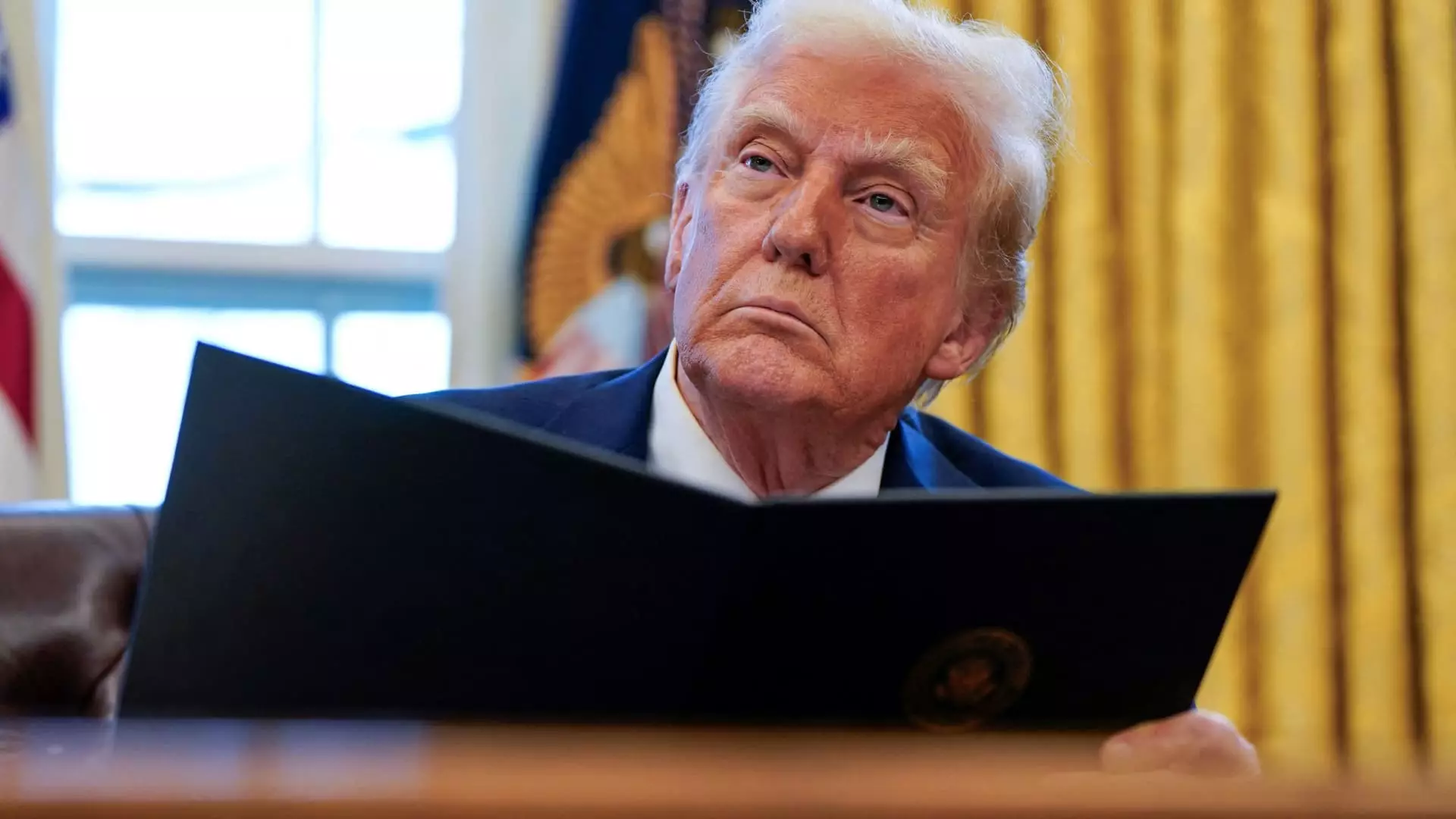In a significant shift in trade policy, the White House officially announced that President Donald Trump would impose substantial tariffs on key U.S. trading partners, including Canada, Mexico, and China. This decision, confirmed by White House Press Secretary Karoline Leavitt, includes a staggering 25% tariff on both Canada and Mexico and a 10% duty on goods coming from China. The driving force behind these tariffs, according to the administration, is the alarming influx of illegal fentanyl and other synthetic opioids, which they argue are being sourced and distributed from these countries.
This announcement came on the heels of weeks filled with speculation and uncertainty surrounding U.S. trade relations. Markets reacted swiftly to the news. The Dow Jones Industrial Average plummeted by over 300 points (approximately 0.7%), while the S&P 500 and Nasdaq Composite also reported declines. This notable dip demonstrates how closely financial markets are intertwined with trade policy and how investor sentiment can change rapidly with new developments. Earlier in the day, markets had shown promising gains, underscoring the volatility present in today’s economic climate.
The Rationale Behind the Tariffs
The Trump administration appears to be leveraging these tariffs as a dual strategy: to negotiate changes in foreign policy and to address domestic concerns about drug trafficking and immigration. Trade advisor Peter Navarro emphasized that these tariffs are a necessary response to the fentanyl crisis, drawing stark parallels between the number of drug-related fatalities and the capacity of the Superdome during the Super Bowl. Such evocative comparisons aim to highlight the urgent need for action, framing the tariffs not merely as economic tools but as a critical measure to protect American lives.
However, the effectiveness and implications of these tariffs are contested. The idea of using tariffs as bargaining chips in international relations is not new, but history has shown that such strategies can lead to retaliatory measures from affected countries, complicating trade dynamics further. Market analysts are particularly concerned about the risk of reigniting inflation, which has shown signs of moderation in recent months.
The U.S. economy has been in a precarious position, with inflation rates closely monitored by the Federal Reserve. Recent reports indicated that inflation remained at 2.6%, raising concerns that the newly imposed tariffs might add additional pressure on prices just as they were beginning to stabilize. Federal Reserve officials, including Governor Michelle Bowman, have expressed the need for clarity on the actual implementation of these tariff policies and their anticipated effects on the economy.
The potential for these tariffs to trigger retaliatory actions from other countries raises yet another layer of uncertainty. Chicago Fed President Austan Goolsbee highlighted the critical distinction between whether these tariffs will be short-lived announcements or sustained economic measures. If other nations respond with their tariffs, it could lead to a tit-for-tat trade war, producing further negative consequences for the global economy and U.S. consumers alike.
As these policies unfold, the broader implications for U.S. trade relations loom large. The U.S., Canada, and Mexico engage in roughly $1.6 trillion in annual business, which makes the implementation of tariffs an existential threat to significant portions of this trade. It is crucial for stakeholders—from corporations to consumers—to remain vigilant about how these changes will reshape market landscapes.
Moreover, there is uncertainty surrounding potential exemptions to tariffs, as detailed communication from the White House remains minimal. The administration has denied reports suggesting there could be exclusions, signaling a firm stance on the implementation of these tariffs. This lack of clarity could further exacerbate market volatility as businesses scramble to adapt to the new trading environment.
The decision to impose aggressive tariffs on major trading partners introduces both immediate concerns and long-term ramifications for the U.S. economy. While administration officials advocate these measures as necessary steps for national security and public health, many economists warn of possible inflationary pressures and economic retaliation. As these developments unfold, it remains critical for policymakers to tread carefully, balancing national interests with the realities of an interconnected global economy. The months ahead will be pivotal in determining the success of these tariffs and their impact on domestic and international economic landscapes.


Leave a Reply